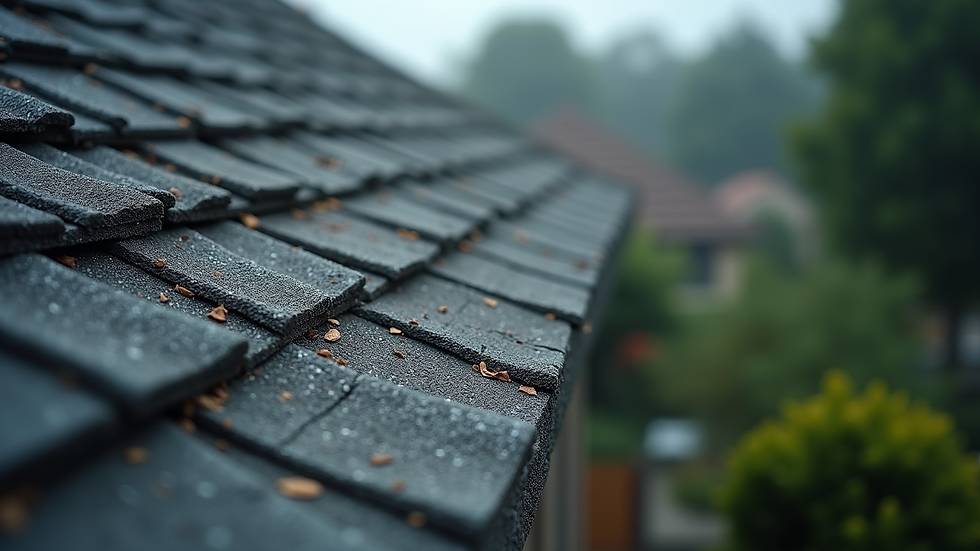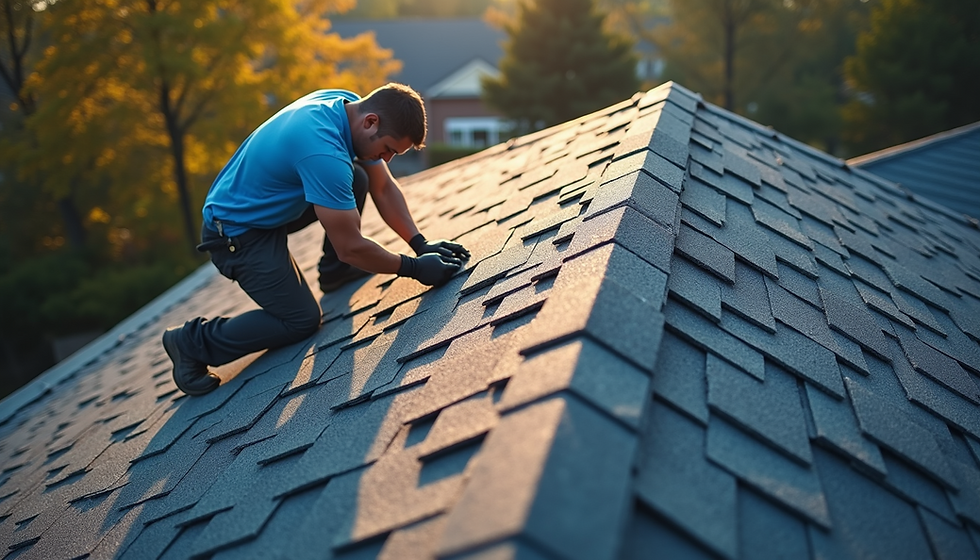Top Strategies for Repairing Your Roof
- James Creed
- Sep 15
- 4 min read
Maintaining a sturdy and leak-free roof is essential for protecting your home from the elements. Over time, roofs can develop issues such as missing shingles, leaks, or damaged flashing. Knowing how to address these problems early can save you from costly repairs or even a full roof replacement. This article explores effective strategies to keep your roof in top condition and extend its lifespan.
Essential Roof Repair Tips to Keep Your Roof Strong
When it comes to roof maintenance, prevention is key. Regular inspections and timely repairs can prevent minor issues from turning into major headaches. Here are some practical roof repair tips to help you maintain a durable roof:
Inspect your roof twice a year: Check for damaged or missing shingles, cracks, and signs of wear, especially after storms.
Clean gutters and downspouts: Blocked gutters can cause water to back up and damage your roof edges.
Trim overhanging branches: Limbs rubbing against your roof can wear down shingles and cause leaks.
Check attic ventilation: Proper airflow prevents moisture buildup that can damage roofing materials.
Address moss and algae growth: These can deteriorate shingles and reduce your roof’s lifespan.
By following these tips, you can catch problems early and maintain a healthy roof.

Damaged shingles and moss can lead to roof deterioration if not addressed promptly.
Identifying Common Roof Problems Early
Recognizing the signs of roof damage early is crucial for effective repairs. Some common issues to watch for include:
Missing or cracked shingles: These expose the underlying layers to water damage.
Leaks and water stains: Look inside your home for discoloration on ceilings or walls.
Damaged flashing: Flashing seals roof joints and vents; if broken, it can cause leaks.
Sagging roof deck: This indicates structural damage and requires immediate attention.
Granule loss on shingles: Excessive granule loss reduces shingle effectiveness.
Regularly inspecting your roof and knowing what to look for can help you address these problems before they worsen.

Missing shingles after a storm can compromise roof protection.
How to Repair a Roof Without Replacing It?
Not every roof problem requires a full replacement. Many issues can be fixed with targeted repairs that restore your roof’s integrity. Here are some common repair methods:
Shingle replacement: Remove damaged shingles and replace them with new ones to prevent leaks.
Seal leaks with roofing cement: Apply roofing cement to small cracks or holes to stop water intrusion.
Fix flashing: Replace or reseal damaged flashing around chimneys, vents, and skylights.
Patch holes: Use roofing patches or membranes to cover holes or worn areas.
Clean and treat moss: Use moss-killing solutions and gently remove moss to protect shingles.
These repairs can extend your roof’s life and delay the need for a costly replacement. However, if damage is extensive, consulting a professional is recommended.

Applying roofing cement is an effective way to seal small leaks and cracks.
Tools and Materials Needed for DIY Roof Repairs
If you decide to tackle minor roof repairs yourself, having the right tools and materials is essential. Here’s a list of what you might need:
Ladder: Ensure it is stable and tall enough to reach your roof safely.
Hammer and roofing nails: For replacing shingles or securing flashing.
Roofing cement or sealant: To seal cracks and leaks.
Replacement shingles: Match the existing shingles for a uniform look.
Utility knife: For cutting shingles or roofing materials.
Roofing patch or membrane: For covering holes or worn areas.
Safety gear: Gloves, safety glasses, and non-slip shoes.
Always prioritize safety when working on your roof. If you are unsure about any repair, it is best to hire a professional.
When to Call a Professional for Roof Repairs
While many roof repairs can be done by homeowners, some situations require expert intervention. Consider calling a professional if:
The damage covers a large area.
You notice structural issues like sagging.
You are uncomfortable working at heights.
The roof is older and nearing the end of its lifespan.
You want a thorough inspection and warranty on repairs.
Professional roofers have the experience and equipment to handle complex repairs safely and effectively. They can also provide advice on whether a repair or replacement is the best option.
Maintaining Your Roof After Repairs
After completing repairs, ongoing maintenance is vital to keep your roof in good shape. Here are some tips:
Schedule regular inspections every six months.
Keep gutters clean to prevent water damage.
Remove debris such as leaves and branches promptly.
Monitor attic ventilation and insulation.
Address any new issues immediately.
By staying proactive, you can maximize the lifespan of your roof and protect your home.
For those looking to repair roof issues professionally, expert services can provide peace of mind and quality workmanship.

Regular maintenance keeps your roof strong and prevents costly repairs.
Taking care of your roof with these strategies will ensure it remains a reliable shield for your home for years to come.




Comments